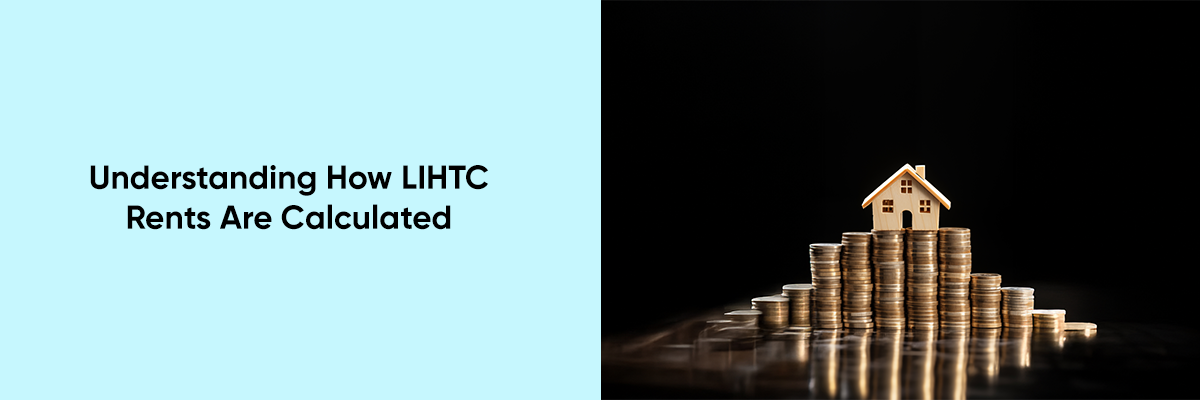The Low-Income Housing Tax Credit (LIHTC) program plays a critical role in creating and maintaining affordable housing in the United States. Through tax credits offered to developers, this program encourages the development of rental properties specifically designated for low- and moderate-income households. One unique feature of LIHTC housing is how rents are calculated—an essential factor for both residents and developers alike.
In this guide, we’ll explore the methods and factors involved in calculating LIHTC rents, helping to clarify how the program sustains affordable housing while balancing financial feasibility.



1. How Are LIHTC Rents Calculated?
LIHTC rents are not calculated on individual tenant income, which sets the program apart from other affordable housing options, such as Section 8. Instead, rent limits are based on a percentage of the area median income (AMI), adjusted for family size, to ensure affordability across a specific income bracket. Here’s a breakdown of the process:
Determining Maximum Rent Based on AMI
- Setting Income Levels: The U.S. Department of Housing and Urban Development (HUD) establishes the AMI for each area annually. LIHTC properties typically serve residents earning 50% or 60% of the AMI, although there is some flexibility within these limits.
- Applying Income Limits: Rent is calculated based on a percentage of AMI, specifically set at 30% of the AMI figure applicable to the designated income level. For example, if a project targets households at 60% of the AMI, the maximum rent a developer can charge would be 30% of the 60% AMI figure.
Adjustments for Household Size and Unit Type
In LIHTC housing, unit rent calculations adjust based on the assumed household size corresponding to the unit. HUD typically assumes that:
- A one-bedroom unit houses a 1.5-person household.
- A two-bedroom unit houses a 3-person household.
- A three-bedroom unit houses a 4.5-person household.
This assumption helps in calculating an appropriate rent cap per unit type.
For example, if the AMI for a 3-person household in a certain region is $50,000, the 60% AMI cap would be $30,000 annually. The maximum rent would then be 30% of $30,000, translating to an annual rent limit of $9,000, or $750 per month, for a two-bedroom unit.
Gross Rent Limit (Including Utility Allowance)
To ensure overall affordability, LIHTC regulations require that the gross rent limit includes utilities. This means that if tenants are responsible for paying utilities, the calculated maximum rent must be reduced by the utility allowance, which represents the average cost of utilities in that area. This allowance ensures that the total housing cost (rent plus utilities) remains within affordability limits.
For instance, if the rent limit for a particular LIHTC unit is set at $750 per month and the utility allowance is $50, the maximum allowable rent would be reduced to $700.
In order to qualify for the LIHTC, a property must meet a set of eligibility requirements set by HUD which can be checked out here.
2. Factors That Can Affect LIHTC Rent Calculations
While the basic framework of calculating LIHTC rents remains consistent, certain factors can influence these figures:
- Annual HUD Adjustments: Each year, HUD recalculates AMI levels to account for changes in local economies, wage levels, and cost of living, which may lead to yearly rent limit adjustments for LIHTC properties.
- Income Averaging Option: Under recent amendments, LIHTC projects can employ income averaging, allowing properties to serve households with a broader range of incomes—between 20% and 80% of the AMI. This averaging can potentially impact rent limits, as it allows greater flexibility in rent setting across various income levels.
- Local Market Conditions and Subsidies: In some cases, states or localities might impose additional affordability requirements on LIHTC properties or provide further subsidies to lower the effective rents for residents.
3. The Importance of Understanding LIHTC Rent Calculations
For tenants and property managers alike, understanding LIHTC rent calculations is essential. Tenants benefit from transparency in understanding why their rent is set at a certain level, while developers and property managers need to ensure compliance with federal and state regulations to maintain their tax credits.
Additionally, property owners and managers must carefully track HUD’s annual AMI updates and adjust rents accordingly, as failure to comply with rent limits can jeopardize a project’s tax credit status. Staying informed about regulatory changes and market shifts is also crucial for adapting rent strategies to ensure financial sustainability while maximizing affordability. Maintaining compliance with the LIHTC recertification process is also of utmost importance to property managers.
For those interested in a deeper understanding of compliance requirements within affordable housing programs, including LIHTC and fair housing regulations, be sure to check out our Fair Housing Webinars.
Conclusion
LIHTC rent calculations play a critical role in maintaining affordable housing in the United States. By basing rents on a percentage of the area median income, the program ensures that housing remains accessible to households at specific income levels while allowing developers to meet financial goals. However, understanding the nuances of LIHTC rent limits—such as utility allowances, HUD adjustments, and income averaging—is crucial for both residents and property managers. As LIHTC continues to serve as a backbone for affordable housing, a clear grasp of these calculations empowers all parties to work toward sustained, affordable, and accessible housing solutions.


